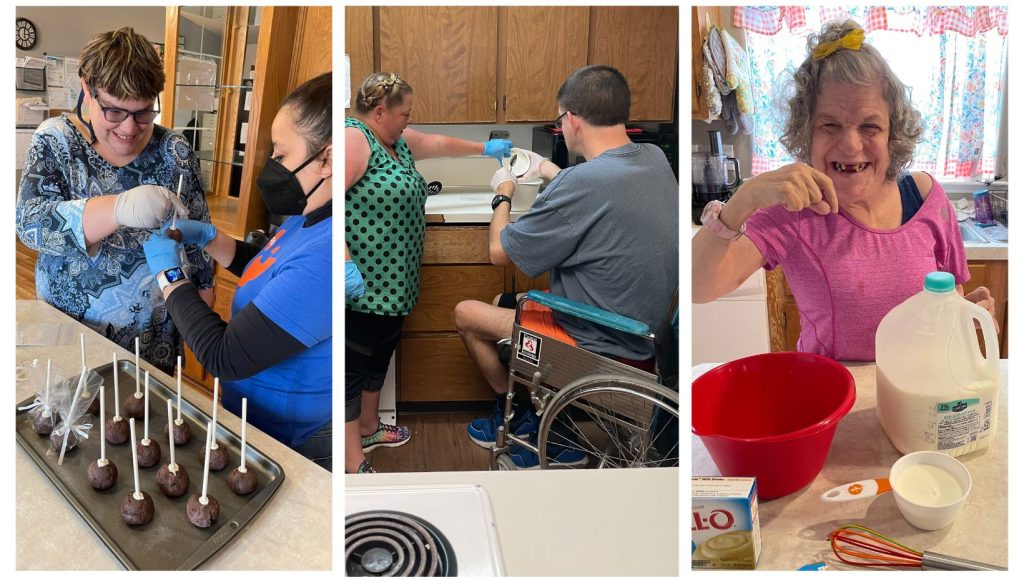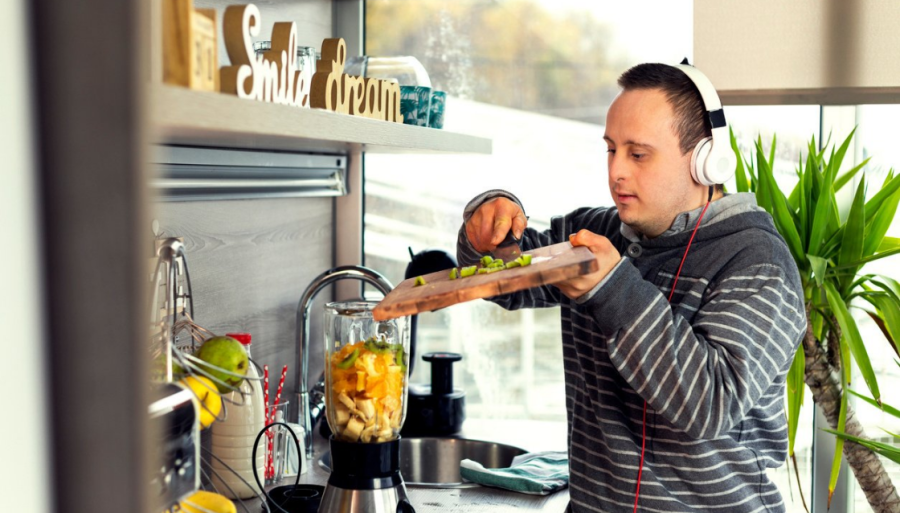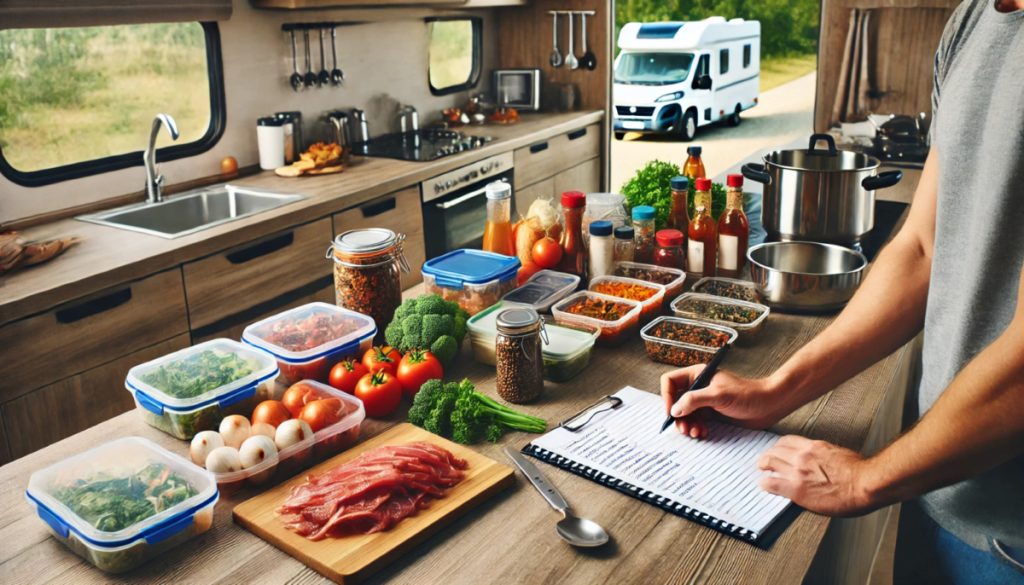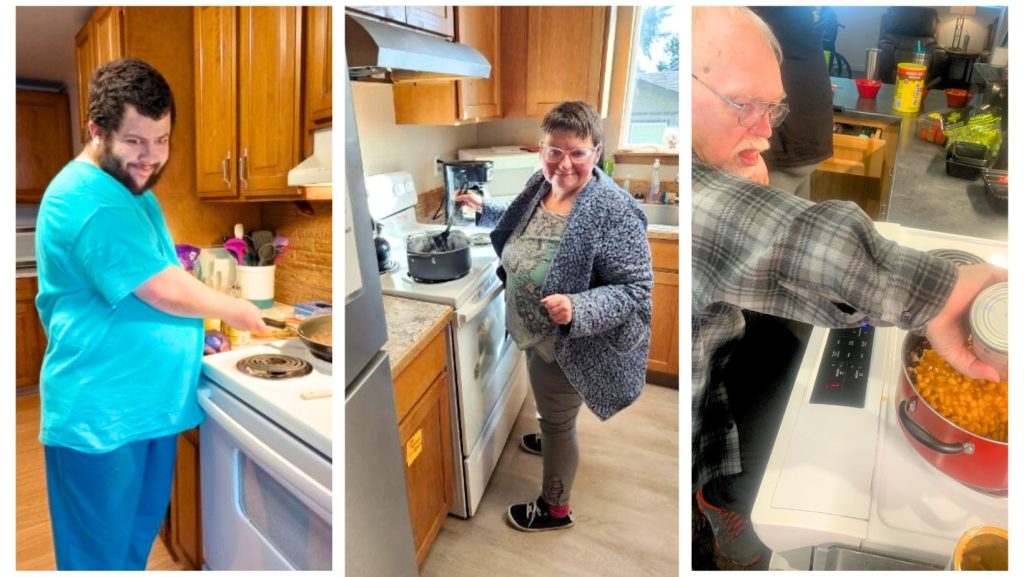
“Cooking and baking can be difficult for many people; some may be dealing with age-related changes, others may have health conditions, injuries or disabilities, including pain and fatigue. [1]
“Mobility impairments or limited engagement of cognitive and physical capacity could make even the most enthusiastic kitchen aficionados not fancy their culinary chances. Historically, the prospect of persons with disabilities having a convenient experience in the kitchen is a topic starved of due attention. However, with advances in inclusive design and technology, we can confidently say times have changed.
Innovation and social restructuring in the form of spreading awareness of the importance of empowering people with disabilities have all shown how these perceived problems could be a catalyst to spur our creative capacity for problem-solving.” [2]
Nowadays there are strategies and equipment that can make creating good meals at home easier.” [1]

Cooking with a disability can be challenging, but there are several tips that can make it easier:
1) “Plan ahead: Decide what you want to cook and break it down into steps. You can also check that you have all the ingredients you need. If you’re busy, you can try creating a weekly menu plan using a whiteboard or a meal planning app.” [3]
2) “Simplify Your Kitchen Set Up: Cooking can be therapeutic and fulfilling, but for those with limited mobility, it can be an overwhelming task. Tasks like chopping, opening jars, and stirring may suddenly seem daunting.” [4]

Use automatic and adaptive devices: Automatic and adaptive devices can make many cooking activities easier. Electric can openers, adaptive utensils, vegetable choppers, knives designed for safety, switch-activated battery-operated scissors and switch-activated adapted pouring cups are just some of the products that can make cooking possible for individuals with impaired fine motor skills or inability to use their hands. Examples:
- “Adapted Kitchen Knives: For chopping vegetables and meats, good-quality knives are essential. Investing in a set of knives with sharp blades, a good grip, and lightweight handles can make a significant difference in the cooking experience. Sharp knives require less effort to cut through food items, resulting in less strain on the muscles and joints.
- Ergonomic Equipment: Using ergonomic kitchen tools that are designed to minimize strain and effort can make cooking more comfortable and less daunting. For example, there are utensils with larger grips and angled handles that require less wrist and arm movement.
- Clear Pots and Pans: These can be challenging to find (here’s one option), but will help you see if your food is done a bit easier and to avoid burned dishes.

- Non-Slip Cutting Boards: A non-slip cutting board is a must-have. The board should have rubber grips on the base to prevent it from slipping, allowing for safer and more comfortable food preparation. You may also want to consider investing in different types of cutting boards, such as those with raised edges or those that can be angled for better use.
- Magnetic Measuring and Mixing Tools: Measuring ingredients and mixing them can be tricky for people with disabilities. Investing in magnetic measuring spoons or cups and mixing bowls with non-slip bases and spouts can make a huge difference in the cooking experience. These tools can be held in place using magnets, making it easier to measure and mix ingredients without any accidents.
- Other Kitchen Aids and Appliances: There are all kinds of kitchen aids and appliances available in the market to make cooking easier for those with limited mobility. Electric can openers, ring pull openers, jar openers, and food processors are a few examples.” [4]

Here’s a great resource for looking over additional options.: https://www.abilitysuperstore.com/collections/kitchen-dining-aids
4) “Use voice-assisted technology: If you’re visually impaired or have motor challenges, avoid going back and forth to your recipe or cookbook by having voice-assisted technology read your recipe aloud.” [5]
5) “Meal Prep food: Meal prep involves cooking large batches of food all at once to be reheated or eaten throughout the week. It entails bulk cooking for the week, which not only saves time but also helps you achieve dietary goals. You can portion the cooked food and refrigerate or freeze them until you’re ready to eat them. This method also allows you more control over the ingredients used in your meals, making it healthier for you.” [4]

6) Support from loved ones: Cooking with a physical disability requires a handful of support from friends and family, and they can always manifest this support in these two ways:
Give them Autonomy: It can be a pretty tempting to insist on offering to help out people with disabilities. This may seem counter-intuitive, but you’re actually not helping them when you do that. However noble your intention may be, “attempting to rob” people with disabilities of their autonomy in the kitchen bashes their confidence.
Empowerment: You’ve got to give people with disabilities a seat at the table when it comes to any day-to-day chore, including cooking. Invite them, not to “tick an inclusivity box,” but as a welcome addition to the already existing kitchen workforce. It could be as simple as giving them little tasks, like measuring ingredients, that make them feel like they are part of the process.

Visit the site below for easy recipes:
Information about Refrigerated Foods: Shelf Life After Coded Date: https://www.disabled-world.com/fitness/cooking/food-storage-guide.php
Get Cooking!
“Cooking is a hobby millions of people enjoy on a daily basis, and there is no reason for disabled people to miss out on this joy, no matter what your disability. Fire up the stove, these easy tips and tricks can help.” [6]
Resources
[1]https://www.washingtonpost.com/wellness/2023/01/24/disability-tips-cooking-baking/
[2] https://www.iaccess.life/cooking-tips-for-people-with-disabilities/
[3] Generative AI is experimental.
[4] https://lifeskillsadvocate.com/blog/cooking-with-limited-mobility-tips-and-techniques/
[5] https://enablingdevices.com/blog/8-cooking-hacks-for-chefs-with-disabilities/
[6] https://disabilityhorizons.com/2023/03/trim-tasty-cooking-made-easier-disabled-people/
